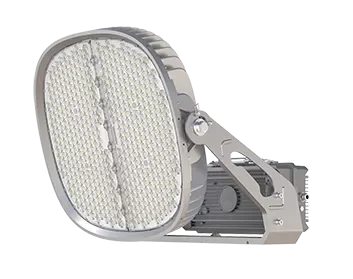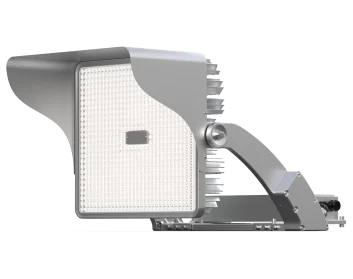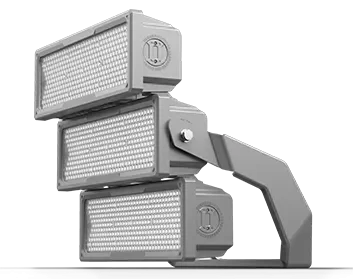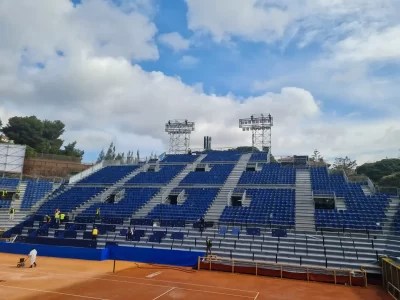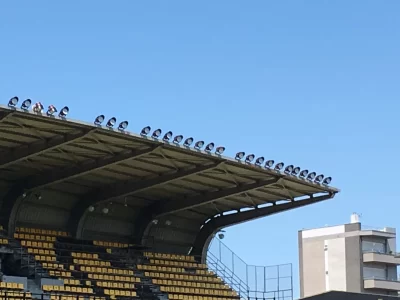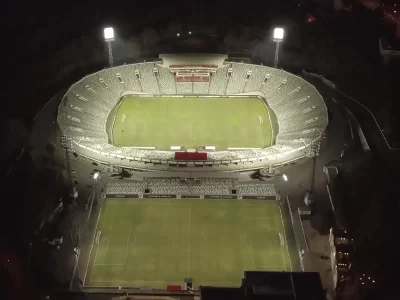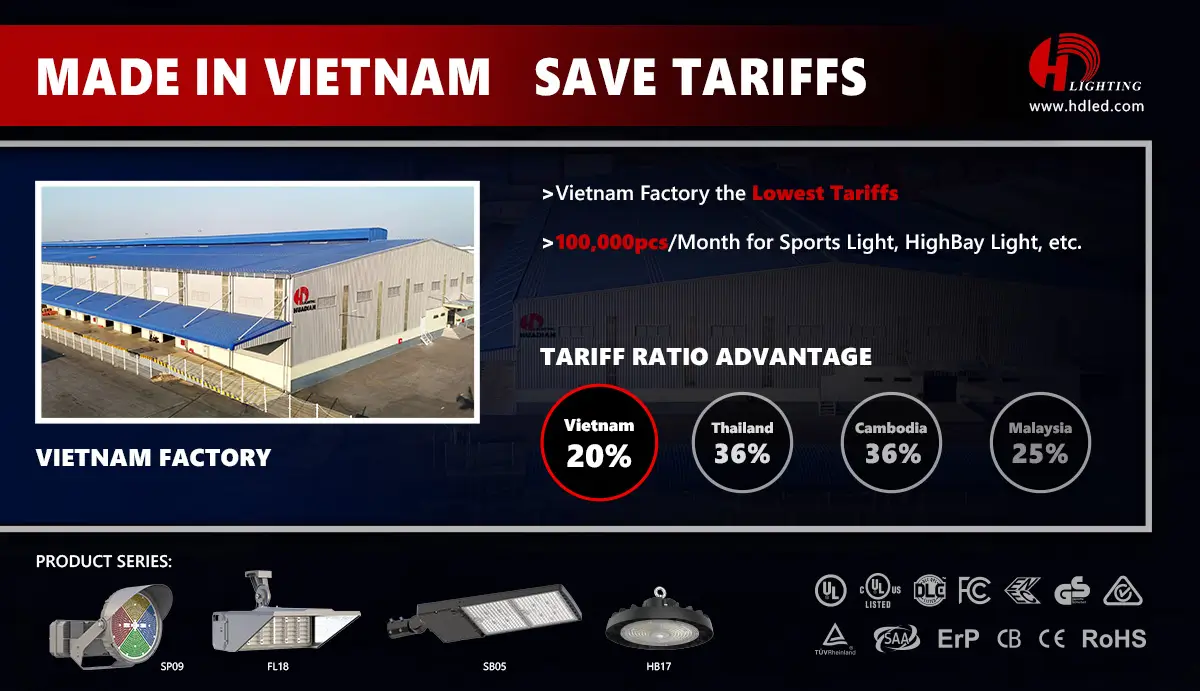Football Field Lighting
Optimal football field lighting is vital for enhancing player performance, ensuring safety during evening games, and creating an immersive and visually stunning experience for spectators both in the stadium and watching remotely.
Home » Applications » football field lighting
Football Field Dimensions
The dimensions of a football field, also known as a football pitch, can vary within the ranges specified by the International Football Association Board (IFAB). According to the Laws of the Game, the field dimensions are as follows:
- Length (Touchline): Minimum 90 meters (100 yards), maximum 120 meters (130 yards)
- Width (Goal line): Minimum 45 meters (50 yards), maximum 90 meters (100 yards)
For international matches, the field dimensions are a bit more standardized:
- Length: Minimum 100 meters (110 yards), maximum 110 meters (120 yards)
- Width: Minimum 64 meters (70 yards), maximum 75 meters (80 yards)
The pitch must be rectangular and marked with continuous lines. A standard football pitch is typically 105 meters in length by 68 meters in width, which is the preferred size for many professional leagues and international matches.
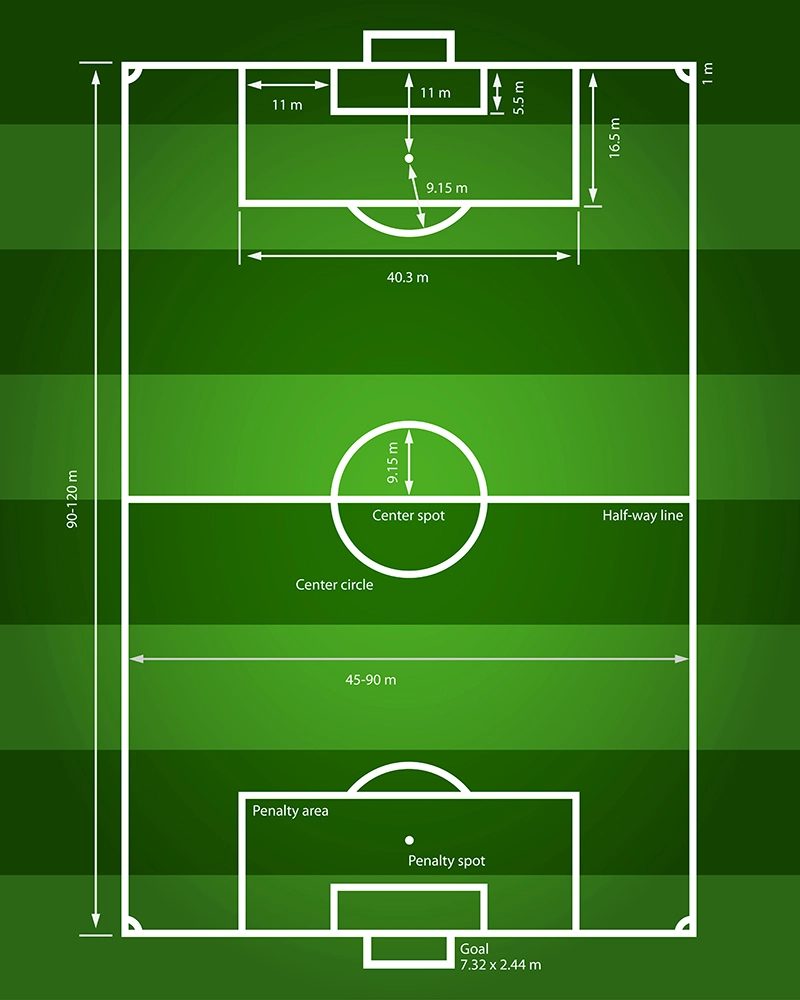
Factors to Consider in Football Field Lighting Design
Illuminance Levels
The amount of light (measured in lux) required varies based on the level of play (recreational, training, competitive, or professional). Higher levels of competition require higher illuminance for better visibility and broadcasting quality.
Uniformity of Lighting
Uniform distribution of light across the field is essential to avoid bright spots and shadows, which can affect players’ performance and safety.
Glare Control
Proper lighting design should minimize glare, which can impair the vision of players, referees, and spectators. This involves careful positioning and angling of lights.
Pole Height and Placement
The number, height, and location of poles impact the overall effectiveness of the lighting. Poles must be strategically placed to ensure adequate coverage and minimize obstructions.
Color Rendering Index (CRI)
High CRI is important for accurately displaying the true colors of the players’ uniforms, the ball, and the field, which is particularly crucial for broadcasting.
Flicker-Free Lighting
For professional fields where games are broadcasted, lighting should be flicker-free to ensure high-quality slow-motion replays.
Durability and Maintenance
The lighting system should be durable and easy to maintain, considering factors like weather resistance and ease of access for repairs and replacements.
Compliance with Standards
Adherence to national and international standards (like EN 12193 in Europe) is crucial for safety and quality assurance.
Budget and Operational Costs
Initial installation costs, as well as long-term operational and maintenance expenses, should be considered in the design.
Environmental Impact
Light pollution and its effects on the surrounding environment should be minimized. This includes controlling spill light and sky glow.
Flexibility and Control Systems
Modern lighting systems offer features like dimming and remote control, which can be useful for different events and uses of the field.
Safety and Emergency Lighting
Ensuring that the field has adequate emergency lighting in case of power failures or other emergencies is crucial for safety.
Lighting Pole Solutions for Football Stadiums
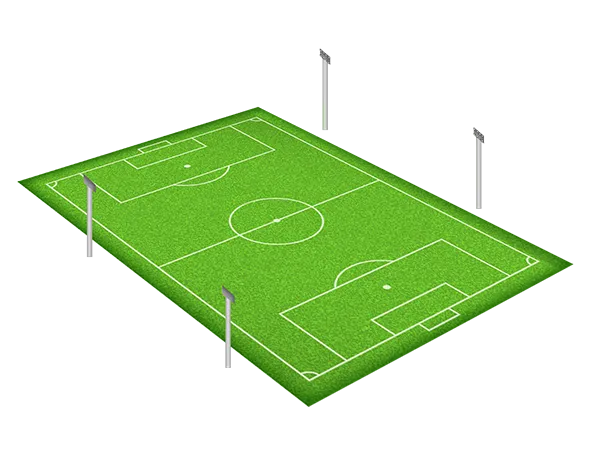
Four Poles in the Center
The central four-pole configuration involves placing poles along the sidelines, two on each side, near the center of the field. This setup aims to provide more uniform lighting across the playing area, reducing shadows and dark spots, but it can pose challenges in terms of potential obstructions to spectators’ views and may require taller poles to cover the entire field effectively.
Four Poles at the Corners
The corner four-pole configuration, a more traditional approach, places one pole at each corner of the field. This setup is generally simpler and more cost-effective, minimizing view obstructions for spectators. However, it can lead to challenges in achieving uniform light distribution, particularly in the center of the field, due to the greater distance from the light sources.
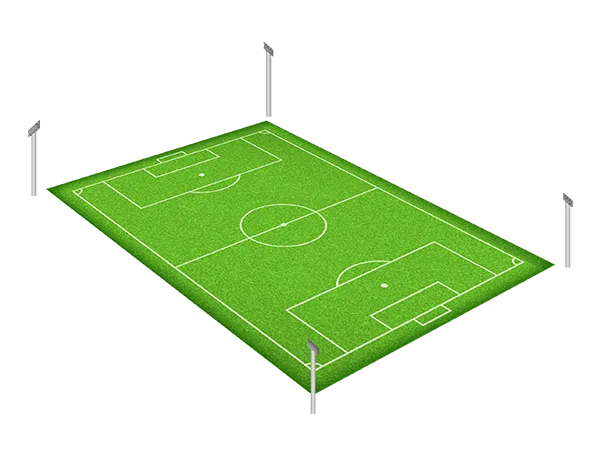
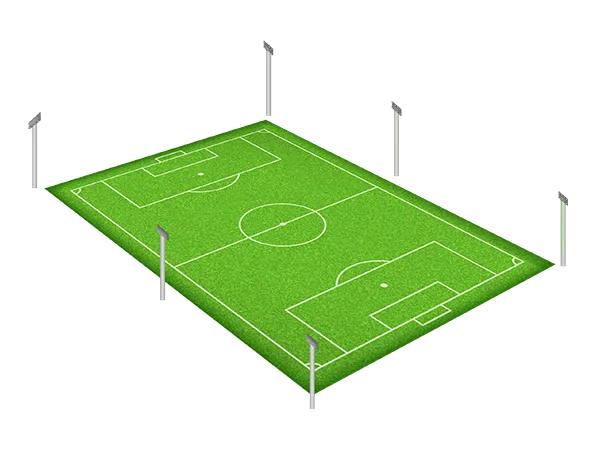
Six Poles Setup
To improve uniformity and reduce shadows, some fields use a six-pole configuration. This usually involves placing additional poles along the sides of the field. This setup is often used in larger fields or where higher levels of play require more consistent lighting, such as in collegiate-level stadiums.
Eight Poles Setup
An eight-pole configuration provides even better lighting uniformity and is typically used in professional or semi-professional football stadiums. Poles are placed at each corner and along each side of the field. This arrangement allows for more fixtures and better control over light spill and glare.
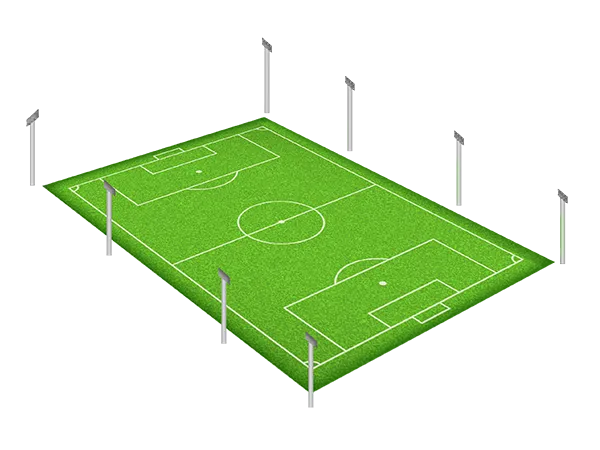
Classes of Football Field Lighting System
Class I (High-Level Competition)
This is the highest level of lighting standard, intended for stadiums hosting international and top-level national competitions. The lighting in this class is designed to satisfy the needs of TV broadcasting in high definition and slow-motion replays, ensuring excellent visibility for players, referees, and spectators. It requires the highest level of uniformity and color rendering. For football, the horizontal illuminance typically ranges from 500 to 750 lux, but it can be higher for major international venues or specific broadcasting requirements.
Class II (Medium-Level Competition)
Class II lighting is suitable for lower-level professional and semi-professional sports competitions. While it still provides good quality lighting for both participants and spectators, the requirements are less stringent than Class I. This level is often used in smaller stadiums and is adequate for local TV broadcasts. For football, the horizontal illuminance generally ranges from 200 to 500 lux.
Class III (Recreational and Training)
This class is designed for recreational, training, and school-level sports activities. The lighting levels are lower than in Classes I and II, as the focus is on providing safe and functional lighting for participants rather than on the needs of television broadcasting. For football, the horizontal illuminance is typically between 75 and 200 lux.
Sports Lighting
- Football Field Lighting
- Basketball Field Lighting
- Baseball Field Lighting
- Tennis Court Lighting
- Swimming Pool Lighting
Industrial Lighting
Area Lighting
- Airport Lighting
- Parking Lot Lighting
- Seaport Lighting
- Landscape Lighting
- Crane Lighting
Street Lighting
Want to know more?
Reach out to us for questions and inquiries.


